Shoulder impingement can be a painful and debilitating condition that affects the mobility and function of your shoulder joint. It occurs when the tendons of the rotator cuff become irritated or compressed due to the narrowing of the space in the shoulder. This issue often leads to pain, weakness, and limited motion, especially when lifting the arm or performing overhead movements. If you’re struggling with shoulder impingement, exercising the shoulder properly can be an effective way to relieve pain and improve your range of motion. In this blog, we will cover some of the best exercises for shoulder impingement, how they help, and precautions to keep in mind.
What Is Shoulder Impingement?
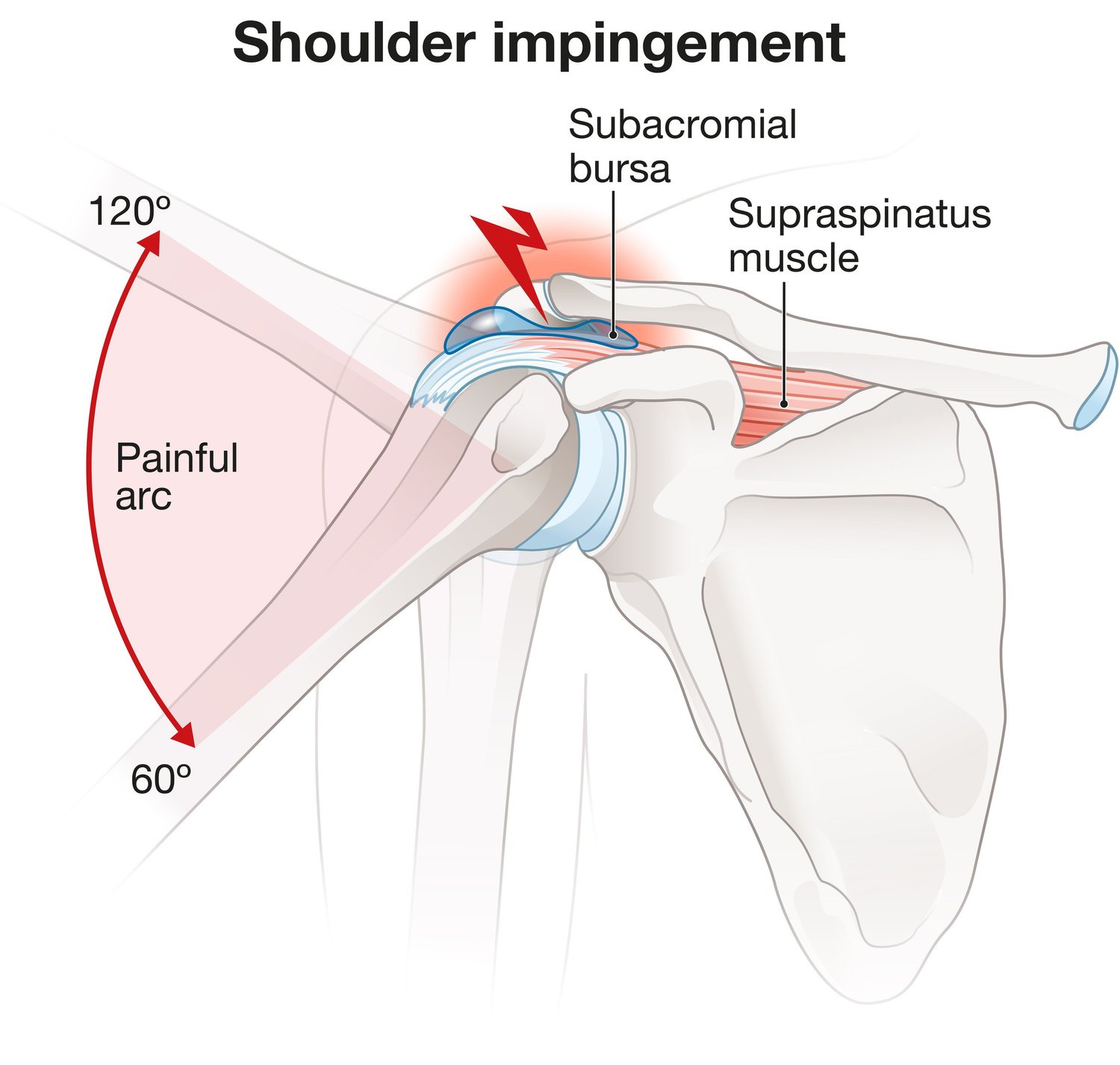
Shoulder impingement, also known as subacromial impingement syndrome, occurs when the tendons of the rotator cuff become compressed or pinched between the bones of the shoulder. This condition is common among athletes, particularly those who perform overhead activities like tennis, swimming, or weightlifting, but it can also affect individuals who do repetitive work involving arm movement.
The shoulder joint is a ball-and-socket joint, and it is one of the most mobile joints in the body. Because of this mobility, the shoulder is more prone to impingement, especially when the tendons of the rotator cuff get irritated or inflamed.
Symptoms and Diagnosis
Shoulder impingement can cause several telltale signs, including:

- Pain when lifting the arm: This is the most common symptom, especially when raising the arm overhead or reaching behind the back.
- Weakness: The shoulder may feel weak when trying to lift objects or perform certain movements.
- Pain during sleep: Lying on the affected shoulder can trigger pain or discomfort at night.
- Limited range of motion: There may be difficulty reaching behind the back or lifting the arm above the head.
To diagnose shoulder impingement, a doctor will typically perform a physical exam and may request imaging tests such as X-rays or MRIs to assess the condition of the tendons and the space in the shoulder joint.
How Exercise Helps in Relieving Symptoms
Exercise plays a crucial role in managing shoulder impingement. When performed correctly, exercises help by:
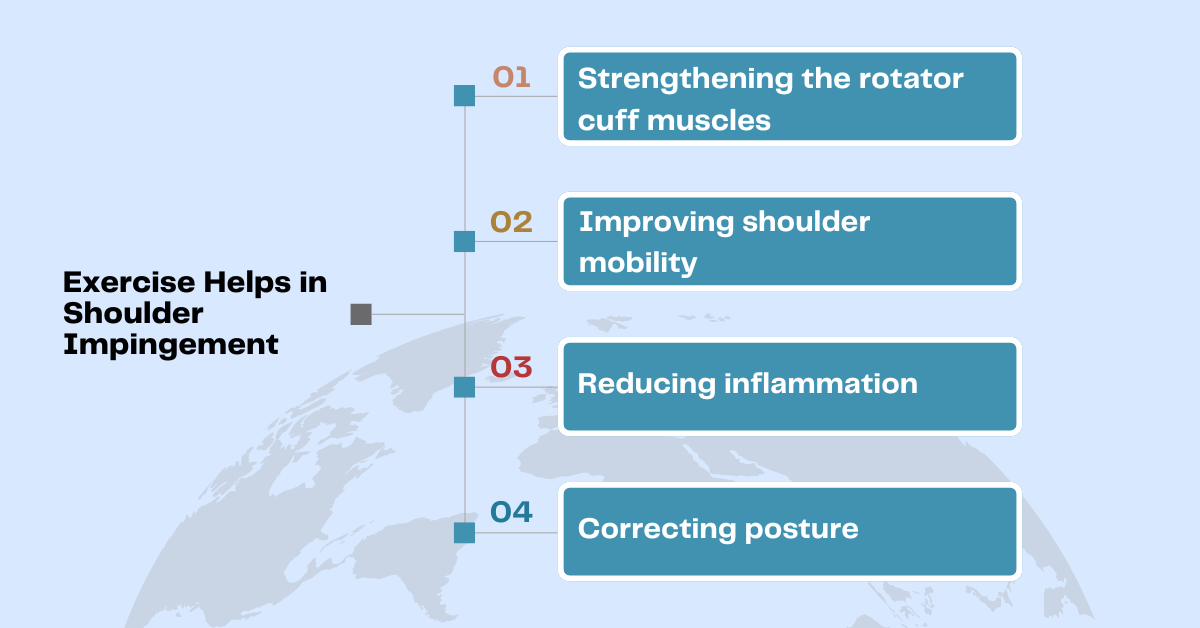
- Strengthening the rotator cuff muscles: These muscles help stabilize the shoulder joint and prevent impingement.
- Improving shoulder mobility: Stretching and mobility exercises help maintain or restore the full range of motion in the shoulder joint.
- Reducing inflammation: Strengthening the shoulder and improving posture can reduce stress on the tendons, potentially alleviating inflammation and pain.
- Correcting posture: Poor posture can contribute to impingement. Exercises can help align the shoulders and spine, reducing strain on the joint.
Precautions Before Starting Exercises
Before starting any exercise routine for shoulder impingement, it’s essential to take the following precautions:
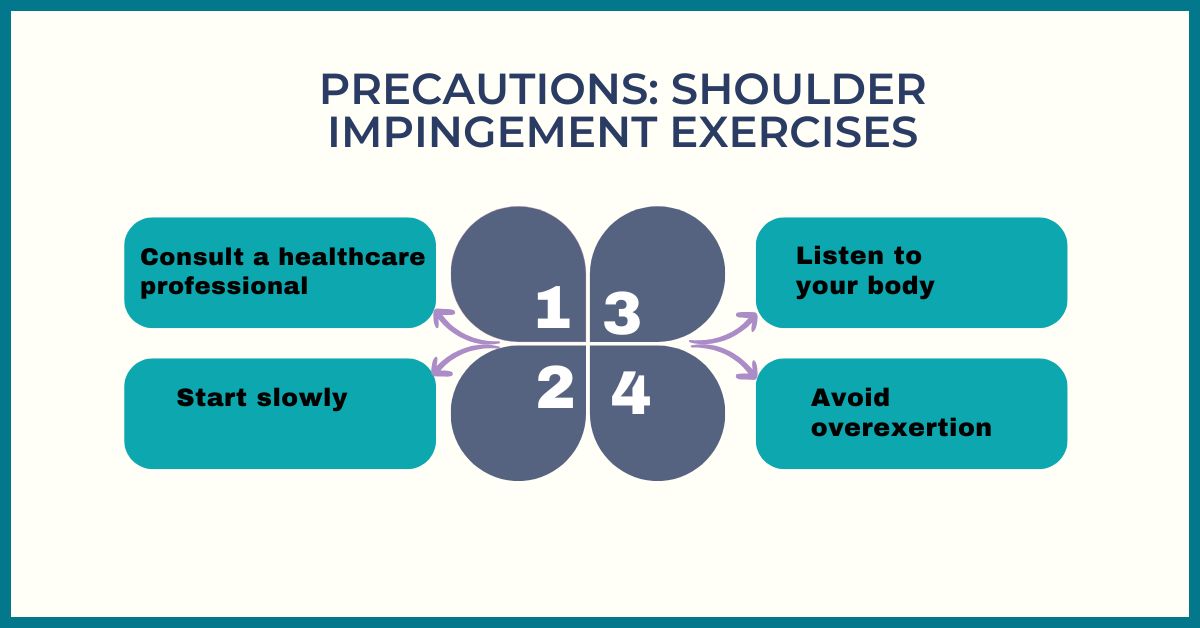
- Consult a healthcare professional: Before beginning any exercise program, consult a doctor or physical therapist to ensure the exercises are appropriate for your specific condition.
- Start slowly: If you’re in pain, don’t push yourself too hard. Gradually increase the intensity and duration of exercises as you improve.
- Listen to your body: Avoid exercises that cause sharp pain. Mild discomfort is expected, but intense pain could indicate that you’re exacerbating the condition.
- Avoid overexertion: Shoulder impingement can be aggravated by overuse. Ensure you’re balancing your exercise routine with proper rest and recovery.
Best Shoulder Impingement Exercises
Now that we understand how exercise can help, let’s look at the top five exercises for shoulder impingement relief:
1. Pendulum Swings
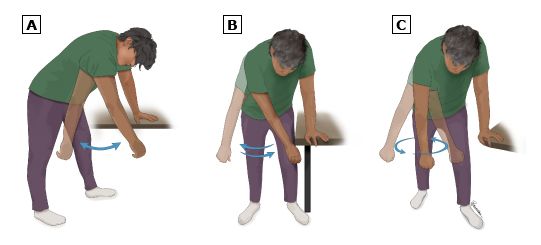
Pendulum swings are a gentle and effective exercise that helps increase shoulder mobility and reduce pain.
- How to do it: Stand with your feet shoulder-width apart. Lean forward slightly, allowing your affected arm to dangle straight down. Use your non-injured arm for support by holding onto a chair or table. Swing your arm in small circles, gradually increasing the size of the circles. Perform for 30 seconds in each direction.
- Benefits: This exercise improves shoulder flexibility and gently mobilizes the joint without putting strain on it.
2. Wall Angels

Wall angels help strengthen the upper back muscles, improving posture and reducing the chances of impingement.
- How to do it: Stand with your back against a wall, feet a few inches away. Press your lower back, upper back, and head against the wall. Bend your elbows to 90 degrees, keeping your arms at shoulder height. Slowly slide your arms up the wall as far as you can, then lower them back to the starting position. Perform 10-15 repetitions.
- Benefits: This exercise targets the muscles around the shoulder blades, improving posture and promoting better alignment in the shoulder joint.
3. External Rotations with Resistance Bands
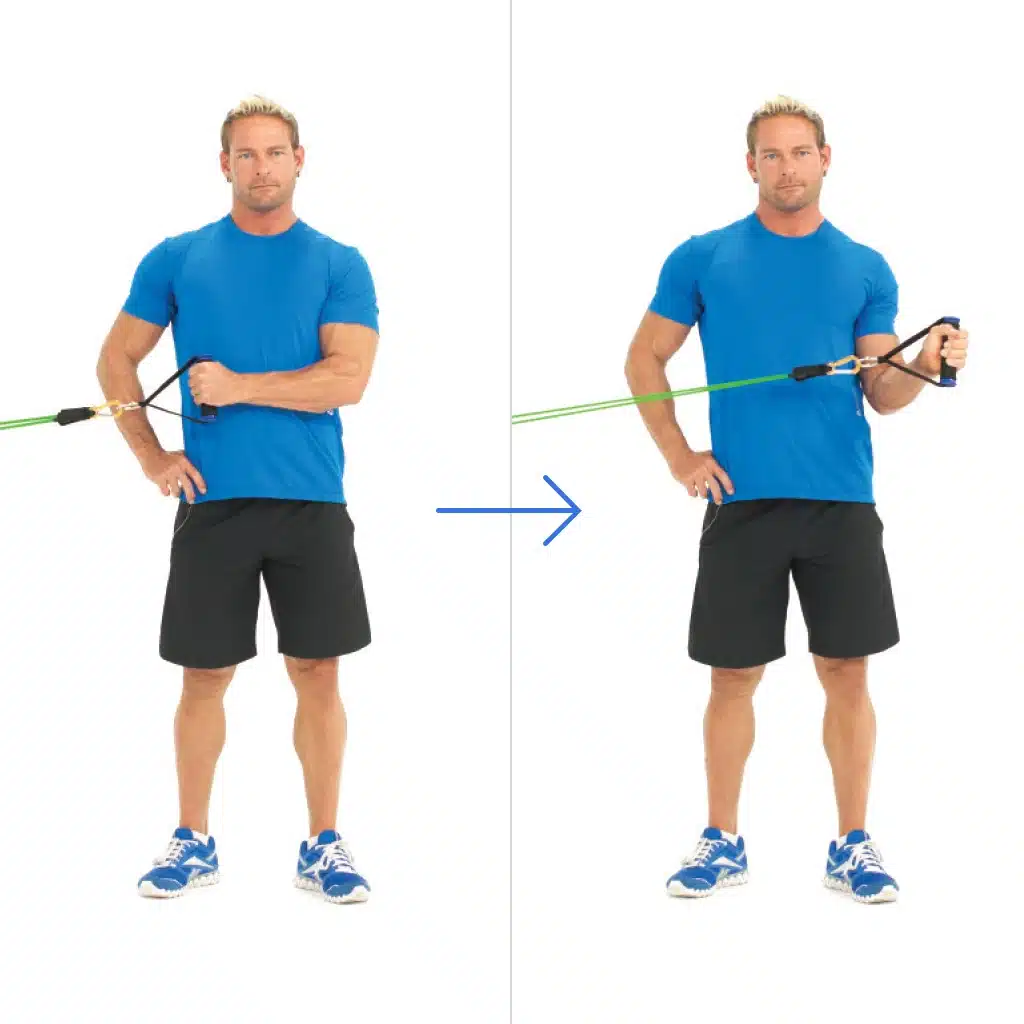
Strengthening the external rotator muscles is crucial for reducing shoulder impingement symptoms.
- How to do it: Attach a resistance band to a door handle or another secure object. Stand with your injured arm at a 90-degree angle, holding the band with your elbow bent. Keeping your elbow close to your body, slowly rotate your forearm away from your body. Return to the starting position and repeat for 10-15 repetitions.
- Benefits: This exercise strengthens the rotator cuff muscles, particularly the infraspinatus and teres minor, which are important for shoulder stability.
4. Scapular Retraction

Strengthening the muscles around the scapula (shoulder blades) can help alleviate impingement by improving shoulder mechanics.
- How to do it: Sit or stand with your shoulders relaxed. Squeeze your shoulder blades together and down, as if you’re trying to tuck them into your back pockets. Hold the squeeze for 5-10 seconds, then relax. Repeat for 10-15 repetitions.
- Benefits: This exercise targets the muscles around the scapula, improving posture and shoulder mechanics, which can reduce impingement symptoms.
5. Sleeper Stretch
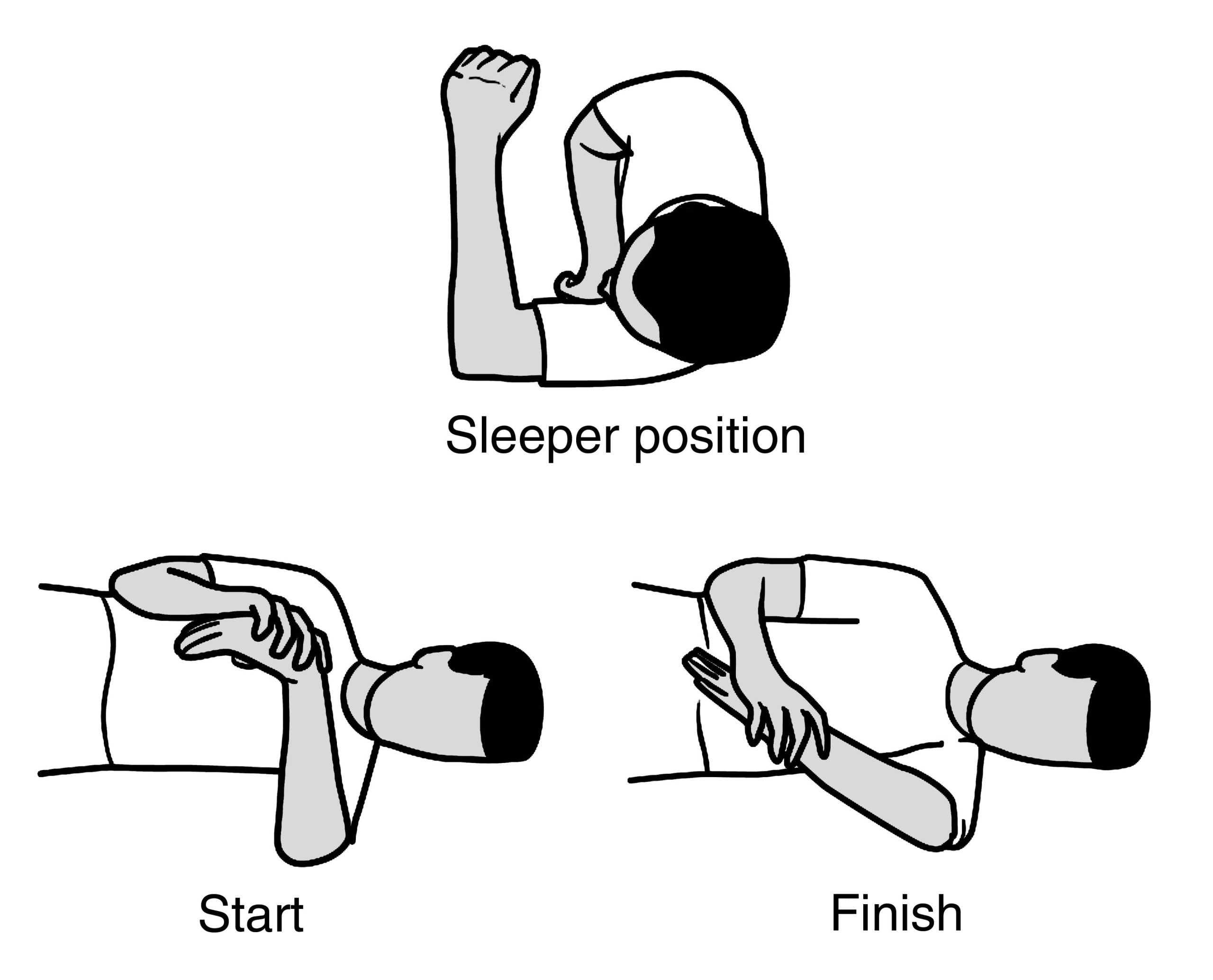
This stretch targets the shoulder’s internal rotators, which can be tight in cases of shoulder impingement.
- How to do it: Lie on your side with the affected shoulder on the bottom. Bend your knees slightly for support. With your bottom arm extended in front of you, use your other hand to gently push the forearm of the bottom arm toward the floor. Hold the stretch for 20-30 seconds, then relax. Repeat 2-3 times.
- Benefits: This stretch helps to relieve tightness in the shoulder capsule, increasing the range of motion and reducing the pressure on the rotator cuff tendons.
Doctor Introduction
Dr. Chintan Vinod Desai is a consulting Shoulder Surgeon based in Mumbai. He specializes in the latest techniques in shoulder surgery, including treatments for shoulder instability, frozen shoulder, rotator cuff tears, impingement, shoulder arthritis, and calcific tendonitis. With years of experience, Dr. Desai is known for providing precise and effective treatment tailored to each patient’s needs. He practices in several locations across Mumbai.
FAQs
1. Can shoulder impingement heal without surgery?
Yes, many cases of shoulder impingement can heal with physical therapy, rest, and anti-inflammatory treatments. Surgery is typically reserved for severe cases that don’t respond to conservative treatments.
2. How long does it take to recover from shoulder impingement exercises?
Recovery time varies depending on the severity of the impingement. Consistent exercises, along with rest and proper care, may show improvements within a few weeks to a couple of months.
3. Is shoulder impingement a permanent condition?
No, shoulder impingement is not necessarily permanent. With proper treatment and exercises, many people can recover fully or manage their symptoms effectively.
4. Can I continue working out with shoulder impingement?
It’s essential to modify your workouts and avoid exercises that cause pain. Low-impact exercises and shoulder-specific stretches or strengthening routines can be helpful.
5. When should I consult a doctor for shoulder impingement?
If your pain persists for several weeks or worsens with exercise or daily activities, it’s essential to consult a doctor to prevent further damage and explore treatment options.
Conclusion
Shoulder impingement can significantly impact your daily life, but with the right exercises, you can relieve pain and regain mobility. Strengthening the rotator cuff, improving flexibility, and maintaining proper posture are key components of managing this condition. Always remember to consult a healthcare professional before starting any exercise routine. If you experience persistent pain or limited motion, seeking professional treatment can help you recover and avoid long-term complications.


